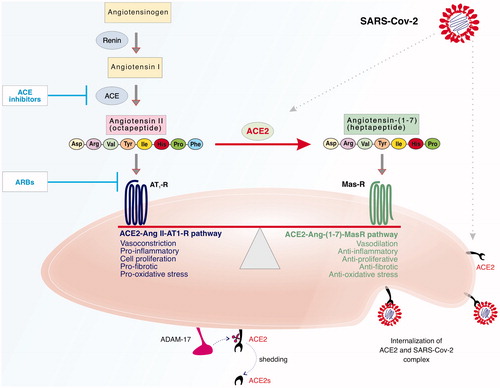Figures & data
Table 1. Examples of experimental studies providing evidence of raised ACE2 mRNA expression, protein levels and/or activity with clinically used medications.
Table 2. Examples of clinical studies showing that COVID-19 patients taking ACEIs/ARBs are not associated with increased risk of either a) infection, b) severity of COVID-19 disease, c) risk of admission to hospital or d) mortality.

![Figure 2. Re-analysis of data from the meta-analysis of Zhang X et al [Citation119] on the association between ACEIs/ARBs use, irrespective of clinical indication, and all-cause mortality in COVID-19 patients using a robust model. Forest plots of the meta-analysis with (A) and without (B) Mehra et al [Citation121] data sets. Doi plots with Luis Furuya-Kanamori (LFK) index values are also shown for re-analysed data with (C) and without (D) Mehra et al [Citation121] data sets. Note that LFK index of greater than 2 suggests major asymmetry.](/cms/asset/dff20da2-6b4f-420b-a2d2-65b4c250cdf7/idrt_a_1797754_f0002_c.jpg)
